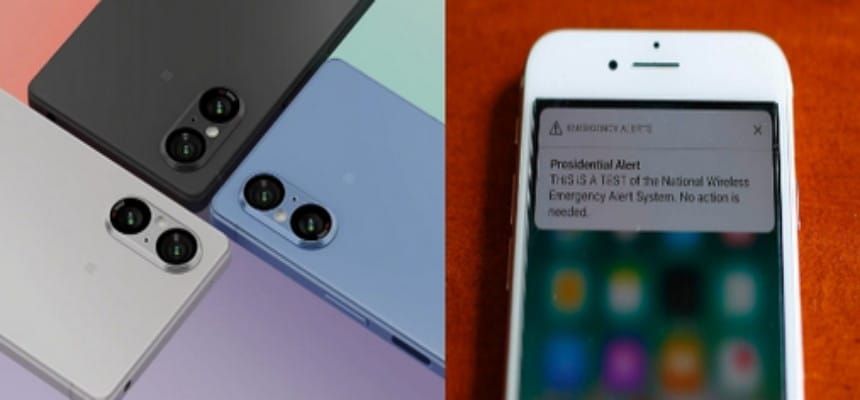Imagine this: you’re going about your day, listening to the radio, when suddenly, your phone emits an alarming sound, accompanied by a text message that reads, “THIS IS A TEST of the National Wireless Emergency Alert System.” No, it’s not a scene from a sci-fi movie or a prank; it’s a real-life test conducted by the Federal Emergency Management Agency (FEMA) as part of the Emergency Alert System (EAS) and Wireless Emergency Alerts (WEA) program. On October 4, at approximately 2:20 p.m. Eastern Time, millions of mobile phones across the United States will receive this unexpected alert. But fear not; it’s just a test, and no action is needed on your part.
The Purpose Behind the Startling Test
The upcoming nationwide test of the Wireless Emergency Alert System is not an attempt to induce panic or chaos. Rather, it serves a vital purpose—to evaluate and ensure the effectiveness of the warning systems used during national emergencies. These tests are part of a broader strategy to enhance the country’s preparedness for various emergency scenarios, including natural disasters, terrorist threats, and other critical situations.
The Federal Emergency Management Agency, commonly known as FEMA, is responsible for coordinating these tests and managing the nationwide alert systems. While it might seem startling to receive an unexpected alert on your phone, it’s essential to understand that this test is a proactive measure to safeguard the well-being of citizens and enhance the nation’s emergency response capabilities.
Understanding the Wireless Emergency Alert (WEA) System
The Wireless Emergency Alert (WEA) system is a crucial component of the broader Emergency Alert System (EAS). It was established to provide timely and critical information to the public during emergencies via mobile phones. This system allows authorized federal, state, local, tribal, and territorial government agencies to send alerts to mobile devices, ensuring that essential information reaches the public rapidly.
Here’s how the WEA system works:
- Alert Originators: Authorized government authorities, such as FEMA, the National Weather Service (NWS), and local emergency management agencies, have the capability to send emergency alerts through the system.
- Alert Types: WEA messages can include alerts about imminent threats to safety or life, AMBER alerts for missing children, and alerts regarding local emergencies requiring evacuation or immediate action.
- Delivery to Mobile Devices: When an authorized alerting authority issues an alert, it is transmitted to mobile devices in the affected area through cell towers and the Commercial Mobile Alert System (CMAS).
- Alert Format: WEA messages are short and concise, limited to 360 characters. They include essential information about the emergency, instructions, and the issuing authority.
- Recipient Experience: When a WEA message is received, mobile devices emit a unique tone and vibration, which are followed by the display of the alert message. Users do not need to subscribe or opt-in to receive these alerts.
- Testing and Training: Periodic tests, like the upcoming nationwide test on October 4, are conducted to ensure the functionality and effectiveness of the WEA system.
Benefits of the Wireless Emergency Alert (WEA) System
The WEA system offers several key advantages in the realm of emergency communication and public safety:
- Immediate Reach: WEA messages are sent directly to mobile devices within the affected area, ensuring that critical information reaches people quickly, even if they are not actively monitoring news or weather updates.
- Broad Coverage: The system leverages the extensive coverage of mobile networks, reaching a wide audience, including visitors and tourists in the affected area.
- Uniform Alert Format: WEA messages follow a standardized format, making them easy to recognize and understand. This uniformity ensures that people can quickly grasp the nature of the emergency and take appropriate action.
- No Subscription Required: Unlike many notification services, WEA messages do not require individuals to sign up or subscribe. They are automatically delivered to compatible mobile devices.
- Accessibility: WEA messages are designed to be accessible to people with disabilities. They include features like vibration and a unique audio tone to ensure that individuals with hearing or vision impairments can receive alerts.
What to Expect on October 4
As mentioned earlier, on October 4, at approximately 2:20 p.m. Eastern Time, your mobile phone will receive a test alert titled “THIS IS A TEST of the National Wireless Emergency Alert System.” The message will be sent in either English or Spanish, depending on the language settings on your device.
When you receive the test alert, you will notice the following:
- Text Message: You will receive a text message that reads “THIS IS A TEST of the National Wireless Emergency Alert System.” This message serves as a clear indicator that the alert is a test and not an actual emergency.
- No Action Required: The message will explicitly state, “No action is needed.” This means that you do not need to take any specific steps or precautions in response to the test alert.
- Audible Alert: In addition to the text message, your mobile device will emit a noticeable sound and vibration. This audible and tactile alert is intended to grab your attention and ensure that you are aware of the test.
- Television and Radio Broadcasts: Simultaneously with the mobile alert, the same test message will be displayed on radios and televisions for approximately sixty seconds.
It’s important to keep in mind that this test is a routine procedure aimed at evaluating the effectiveness of the Wireless Emergency Alert (WEA) system. While the sudden alert may startle you, there is no cause for concern, and no immediate action is required.
Conclusion: Ensuring Emergency Preparedness
In an age where technology plays a pivotal role in our lives, it is crucial to have robust and effective emergency communication systems in place. The Wireless Emergency Alert (WEA) system is one such tool that ensures critical information reaches the public swiftly during emergencies. The upcoming nationwide test on October 4 serves as a proactive measure to assess and enhance the functionality of this vital system.
While receiving an unexpected alert may be startling, it’s important to understand that it is part of a larger effort to bolster the nation’s preparedness for emergencies. By participating in this test, you are contributing to the ongoing improvement of emergency alert systems, helping to safeguard lives and property in the face of potential threats.
So, on October 4, when your phone emits an attention-grabbing sound and displays the test message, remember that it’s a reminder of our collective commitment to safety and preparedness. No need to panic; it’s just a test.



